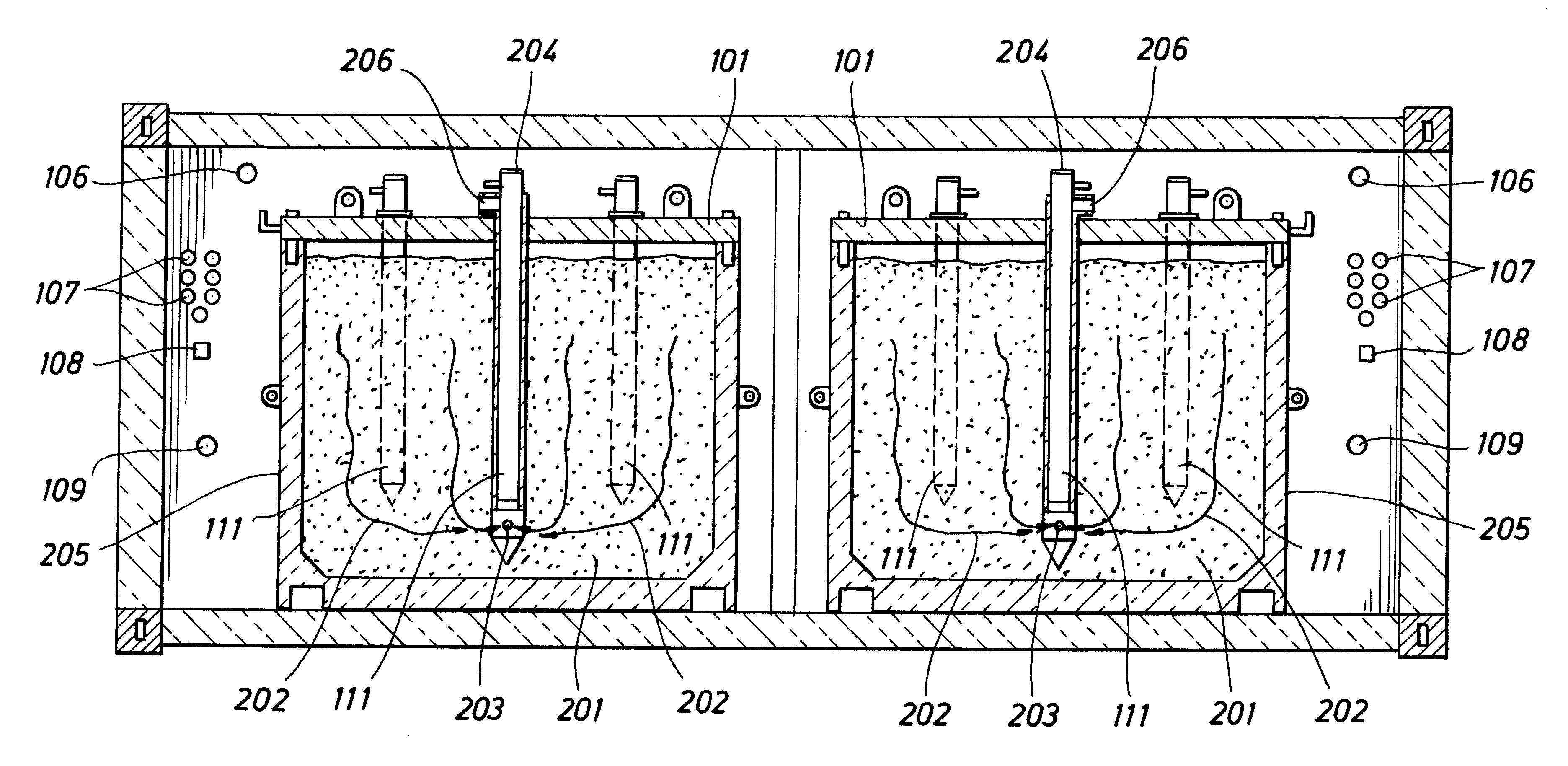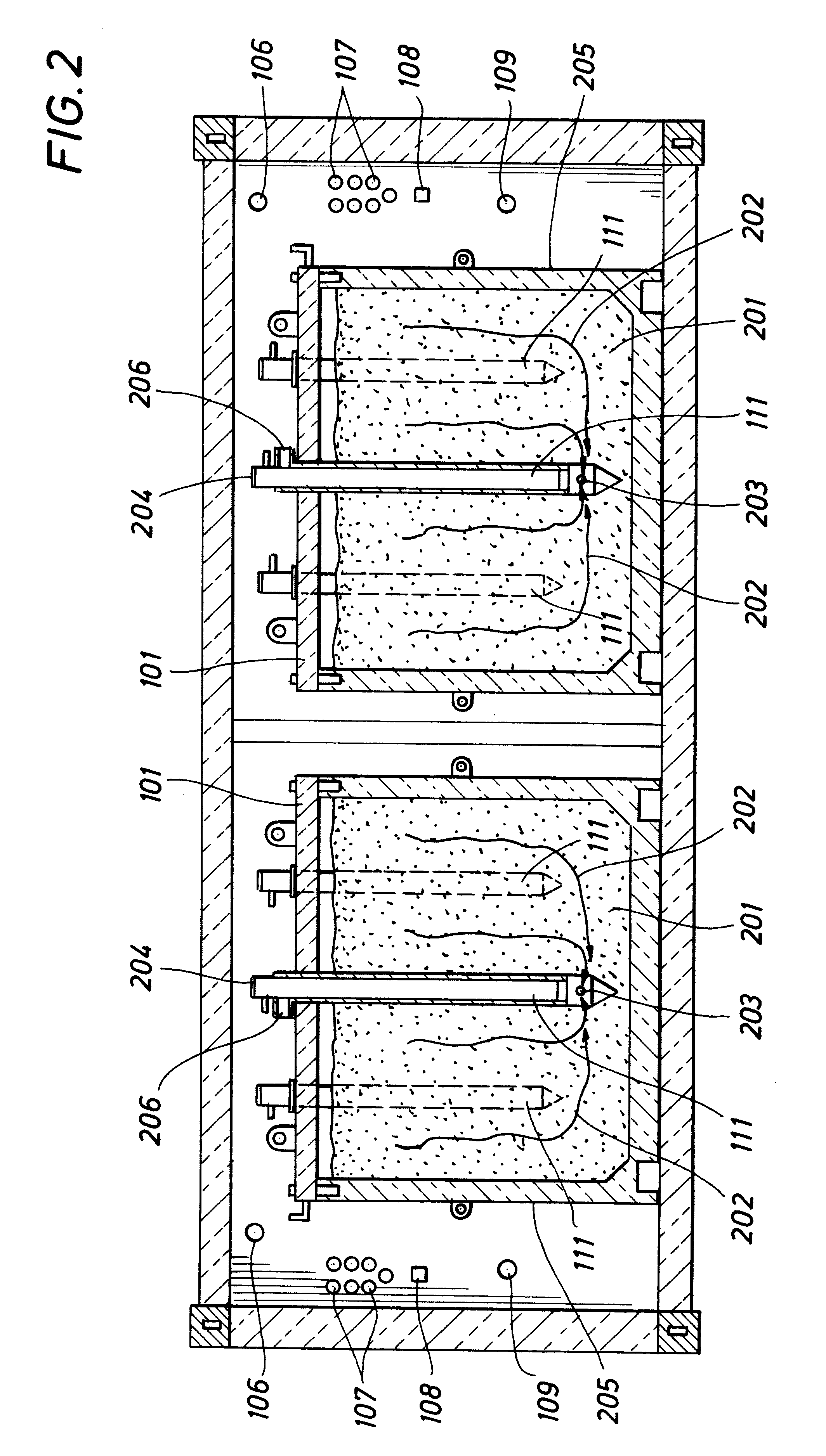Apparatus for exsitu thermal remediation
- Summary
- Abstract
- Description
- Claims
- Application Information
AI Technical Summary
Problems solved by technology
Method used
Image
Examples
Embodiment Construction
The apparatus of the present invention is capable of heating contaminated materials to temperatures which vaporize and / or thermally destroy many common contaminates. For example, sludge from biotreaters can be reduced to a small volume of ash, PCBs and chlorinated solvents can be vaporized from soils, and many insecticides and herbicides can be decomposed or vaporized. Water present in the contaminates also vaporizes, and thus reduces the partial pressure of the contaminants enabling removal by a steam distillation effect. Reduction of pressure by providing for sealing the first and / or second box of the present invention also improves vaporization of contaminates. Alternatively, and preferably, a seal is not maintained, but air is allowed to enter the volume filled with contaminated material through the top, and travel down through the contaminated materials to a vapor removal point near the bottom of the first box. Thus; contaminates can be sweep out even if only a relatively small...
PUM
 Login to View More
Login to View More Abstract
Description
Claims
Application Information
 Login to View More
Login to View More - R&D
- Intellectual Property
- Life Sciences
- Materials
- Tech Scout
- Unparalleled Data Quality
- Higher Quality Content
- 60% Fewer Hallucinations
Browse by: Latest US Patents, China's latest patents, Technical Efficacy Thesaurus, Application Domain, Technology Topic, Popular Technical Reports.
© 2025 PatSnap. All rights reserved.Legal|Privacy policy|Modern Slavery Act Transparency Statement|Sitemap|About US| Contact US: help@patsnap.com



